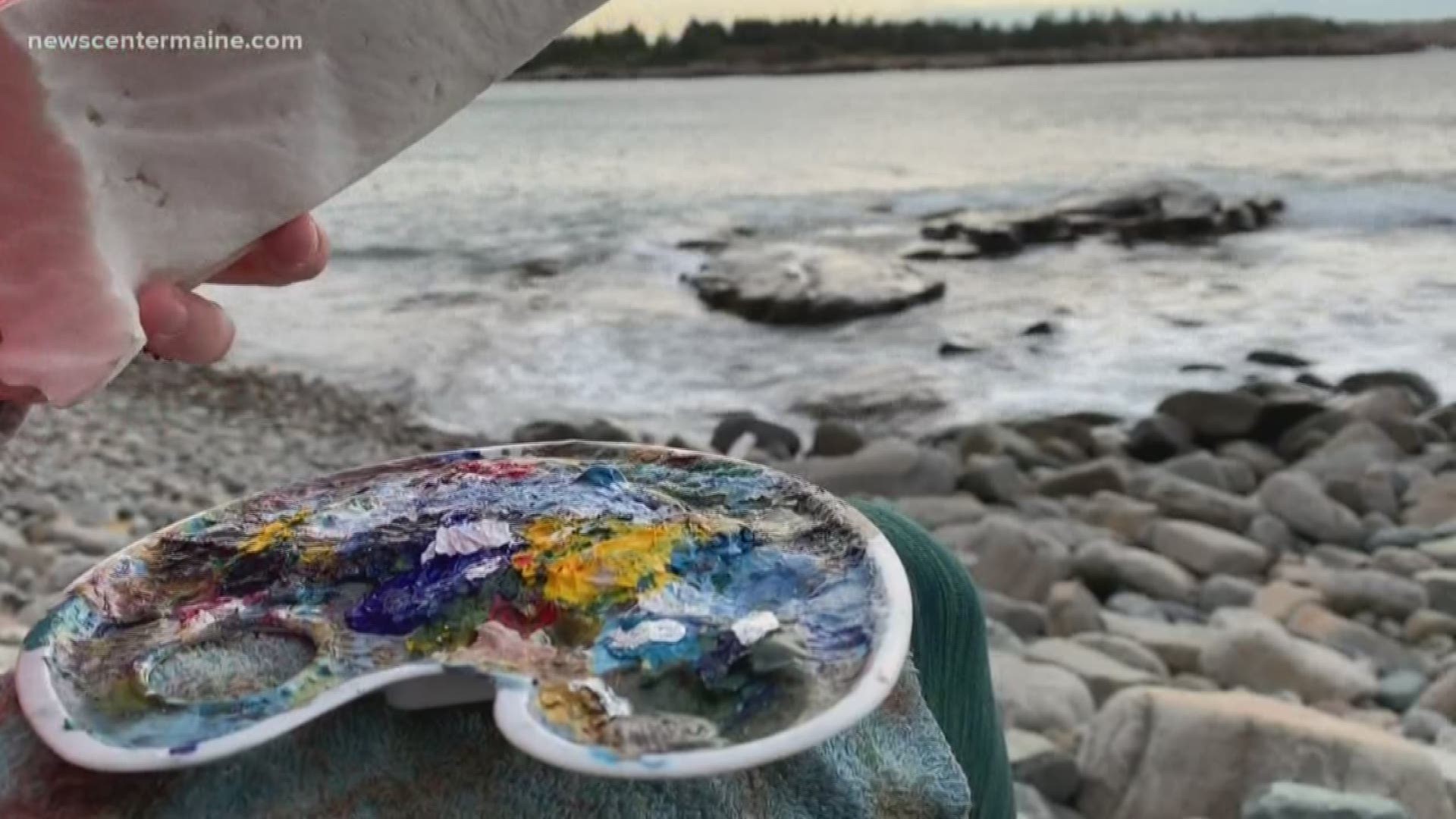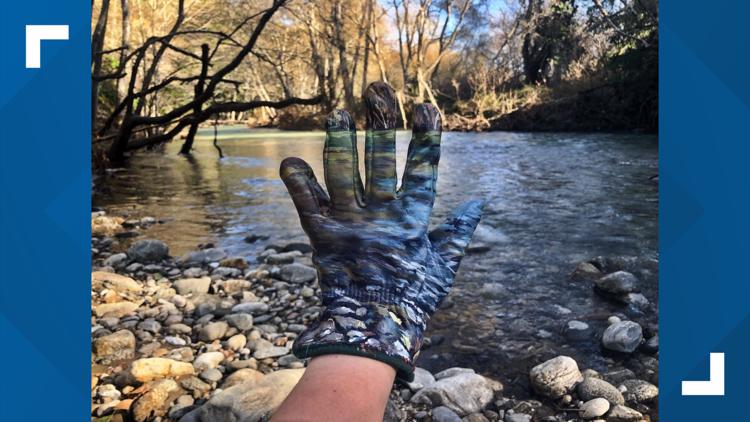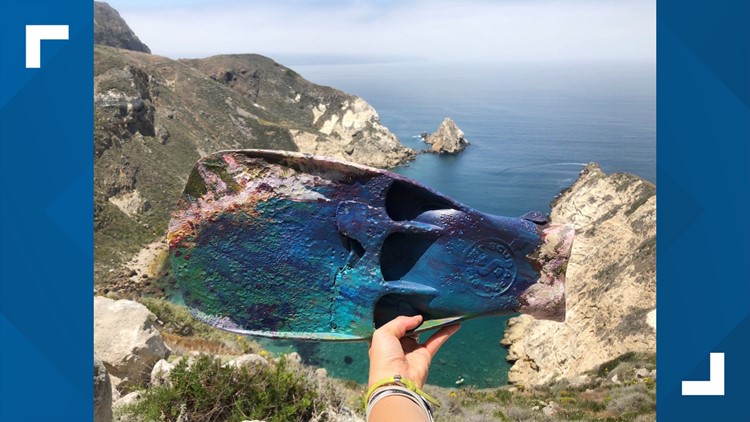WINTER HARBOR, Maine — Tourists who visited Acadia National Park this summer have since headed back home -- but Bangor native, Mariah Reading, has just arrived.
She is a self-described eco-artist and part-time park ranger and will be staying at Schoodic Institute until October 15 for the National Park Service artist-in-residence program. This is her fourth.
"It just gives me so much love and joy," Reading says about her passion for painting in stunning surroundings. "These landscapes, when I'm in them, make me feel so happy and like I belong."
It's a feeling that is especially meaningful to Reading after she discovered her passion for eco-art during her time as a student at Bowdoin College. She says seeing the amount of materials thrown out, unused by students, each day in art class got her thinking about how their waste could be negatively impacting the planet.
"The materials that I was using to depict this scenery that has inspired me so much was ending up hurting it," Reading expressed to NEWS CENTER Maine on Friday.
That's how she came up with an ongoing project -- "Recycled Landscapes" -- in 2016. She was working at Isle au Haut in Acadia and found a broken buoy and another piece of material -- and decided to paint on them to blend the litter into the landscape.
Now, three years later, she is back in her home state after visiting national parks around the country for the artist in residence program -- a program that Christie Anastasia, public affairs specialist at Acadia National Park, says is important.
"National parks have always had a history with artists," Anastasia told NEWS CENTER Maine outside of the park's headquarters. "When we recruit them, they tell us what they want to do. We see the type of work they've done in the past -- but then they spend this deep time with the park, and they come up with something amazing and beautiful."
Turning trash into artwork
For Reading, that work is designed to raise awareness about climate change and pollution in an effort to protect our planet.
"We're kind of at a critical point in the earth right now, where we just need to take action, and art has a really important power of connecting people," Reading says.
RELATED: Scientists want your Acadia National Park photographs
RELATED: 'This challenge is huge': Researchers narrow focus to climate change solutions
Regarding how to enhance these efforts on a day to day basis, she adds it is crucial "to not become complacent, to really just think about what we're using and how we're using it."
It's an effort her former intern supervisor at the University of Maine Museum of Art, Eva Wagner, supports.
"I love the idea of no waste," Wagner says. "It's kind of saving the environment a little bit -- that you're using these found objects and all of a sudden they're getting reused to become art."
Reading will be returning to Acadia in November for another week of work. She says she hopes to come back as much as she can this winter -- because no matter where she travels, Maine will always be home.







